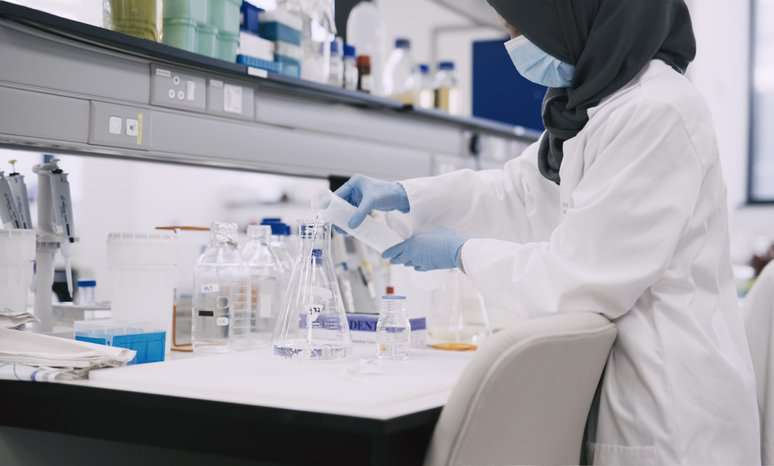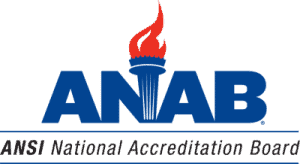Reference Material (RM) vs Certified Reference Material (CRM)

ISO/IEC 17025 accredited laboratories use Reference Materials, or RMs, and Certified Reference Materials, or CRMs, in a variety of ways. RMs and CRMs can be used as check standards, reference standards, proficiency test items, and to establish metrological traceability of laboratory measurements, which is required by the ISO/IEC 17025 standard. Oftentimes, there is confusion about the differences between RMs and CRMs, with laboratories unsure of which to purchase for their intended use and measurement needs.
Reference material production is performed using ISO 17034:2016, General requirements for the competence of reference material producers. Reference material producers are accredited to ISO 17034 with a defined scope of accreditation detailing the types of reference materials that they produce.
Understanding Reference Material, Certified Reference Material, and Other Definitions
To understand the difference between a reference material and a certified reference material, we must first start with a few definitions.
What Is a Reference Material (RM)?
A Reference Material is material, sufficiently homogeneous and stable with respect to one or more specified property values, which has been established to be for its intended use in a measurement process [ISO Guide 30:2015, 2.1.1]. Reference materials may be used in the calibration of measurement systems, assessment of measurement procedures, assigning values to other materials, and quality control.
What Is a Certified Reference Material (CRM)?
A Certified Reference Material is reference material characterized by a metrologically valid procedure for one or more specified properties, accompanied by a reference material certificate that provides the value of the specified property, its associated uncertainty, and a statement of metrological traceability [ISO Guide 30:2015, 2.1.2].
What Are Reference Material Producers (RMPs)?
Both RMs and CRMs are produced by Reference Material Producers, or RMPs. A Reference Material Producer is a body (organization or company, public or private) that is fully responsible for project planning and management; assignment of, and decision on property values and relevant uncertainties; authorization of property values; and issuance of a reference material certificate or other statements for the reference materials it produces [ISO Guide 30:2015, 2.3.5].
What Is a Certified Value?
A Certified Value is a value, assigned to a property of a reference material that is accompanied by an uncertainty statement and a statement of metrological traceability, identified as such in the reference material certificate [ISO Guide 30:2015, 2.2.3]. The certified value could be a quantitative value, such as concentration, or a qualitative attribute, such as identity.
What is a Reference Material Document?
The Reference Material Document is a document containing all the information that is essential for using any reference material [ISO Guide 30:2015, 3.5]. Both product information sheets and reference material certificates are considered reference material documents.
Attributes of Reference Materials and Certified Reference Materials
Reference material is a generic term that includes any materials produced by a reference material producer that is included on the RMP’s scope of accreditation. Confusion comes into play when laboratories need metrological traceability in measurements. Should the laboratory use a reference material or a certified reference material? How can the laboratory know which one to use? What should the laboratory look for on the reference material documents? The table below identifies the major differences and uses of reference materials and certified reference materials.

How Can a Laboratory Know to Use a Reference Material or Certified Reference Material?
If the laboratory is using a reference material to establish metrological traceability, a certified reference material is required, accompanied by a reference material certificate that includes the certified value, its associated measurement uncertainty, and a statement of metrological traceability. Without those attributes, metrological traceability cannot be established in the measurement process. If a laboratory receives a reference material certificate without a certified value, measurement uncertainty, or a statement of metrological traceability, then the item received is not a certified reference material.
What does that mean in simple terms? If a laboratory is performing measurements and reporting results to customers, those results must be metrologically traceable. Therefore, a certified reference material must be used. For example, a laboratory is measuring a liquid sample and reporting identity of a component of the sample. To ensure that the laboratory’s results are valid, a certified reference material must be measured alongside the sample to establish metrological traceability of the identity of the component. In this example, measurement uncertainty would be expressed as a probability or level of confidence of the identity of the component.
Reference materials still have their place in the laboratory. Reference materials can be used as secondary check samples, system suitability standards, and many other uses. But only certified reference materials can be used to establish metrological traceability of measurements made by the laboratory. The laboratory must determine what level of traceability is required for the measurements being performed and purchase the reference material that meets that level. Additionally, the laboratory must understand measurement uncertainty contained on the reference material document to ensure the RM or CRM is suitable for the measurement being performed.
Additional Challenges When Purchasing RMs and CRMs
While knowing which product is a significant challenge for laboratories discussed above, there are additional challenges laboratories face when purchasing RMs and CRMs, such as understanding the reference material document that accompanies the product and knowing how to tell if the RM or CRM was purchased directly from the reference material producer or through a distributor.
ISO 17034 accredited reference material producers can contract with distributors to distribute RMs and CRMs. In these cases, the RMP must ensure the distributor complies with relevant requirements of the ISO 17034 standard, including labeling requirements, effective post-distribution service, and any changes to the RM/CRM. The reference material producer’s name and contact details are required to be included on all RM documentation (RM certificates and product information sheets).
Other organizations may purchase RMs and CRMs from a reference material producer with no contractual arrangement to resell the products. In these cases, the reference material producer has no control over the activities of the reseller after the reference materials have been purchased. When this occurs, laboratories must be cautious in purchasing these reference materials because the requirements of ISO 17034 no longer apply. Metrological traceability may be lost in these instances.
Finally, it is important for laboratories to know what should, and should not, be on reference material documents. ISO Guide 31 provides guidance on the contents of certificates, labels, and accompanying documentation. Remember, reference material documents include reference material certificates for CRMs and product information sheets for RMs. This is a key difference to understand. Certificates can only accompany a product that has a certified value, which is the CRM. The reference material certificate must include the property value and associated uncertainty for the certified value, along with the metrological traceability statement. Product information sheets are not required to contain this information and would not contain certified values.
Who Is Responsible for Ensuring RMs and CRMs Are Used Properly?
Reference material producers have a duty to comply with the requirements of ISO 17034:2016. They must clearly identify products as reference materials or certified reference materials in marketing and sales materials. They must use appropriate reference material documents to accompany reference materials (i.e., product information sheet) and certified reference materials (i.e., reference material certificates). However, it is still the laboratory’s responsibility to ensure that they are defining the requirements for reference materials needed in the measurements performed and purchasing the appropriate reference materials to meet those requirements. Ultimately, reference material producers and laboratories work together to ensure that measurements are metrological traceable and valid.






